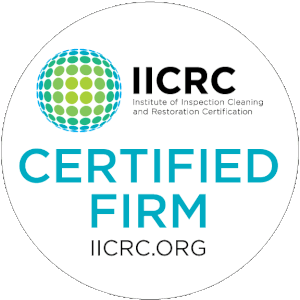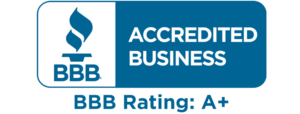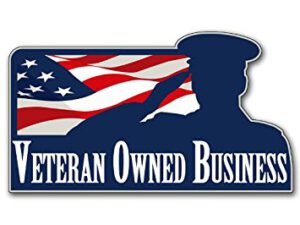CALL 24/7 AFTERCARE RESTORATION 215.515.1000
Ah, a crackling, roaring fire. Is there anything more comforting on a cold winter day? Probably not – but only if the fire isn’t accompanied by clouds of acrid, sooty smoke pouring into your house because of a poorly maintained fireplace or bad fire-starting practices.
We’ve compiled a short list of tips to help you minimize the risk of smoke damage in your home due to improper use of your fireplace.
1. Start With the Right Wood
A good, clean-burning fire starts with hardwood logs that have been properly split and seasoned (dried). Always choose a hardwood for burning in your fireplace: oak, maple, ash, hickory, cherry, beech, or other hardwood species are the preferred choices. Hardwoods season faster than evergreen woods like pine, cedar, or fir. They also contain far less resin, meaning their smoke is clearer and considerably less acrid than that from pitchy, tarry softwoods.
After your hardwood firewood has been split, stack it in a sheltered location off the ground, ideally in a dedicated firewood rack. To ensure faster seasoning and keep your wood drier for longer, “cup” it in the rack: stack it so that the grain pattern on the end of each piece looks like an upside-down “U” or cup (on pieces with bark, this will mean the bark faces up).
Only burn wood once its moisture content is below 20%. If you don’t want to spend the money on a dedicated moisture meter, you can tell when most hardwoods have reached this stage when:
- The wood has turned a rich brown or soft grey color without any noticeable green tint.
- The wood has gotten considerably lighter than when it was freshly cut.
- The wood shows “checking” on the ends – small cracks and splits.
- When you knock on the wood, it produces a bright tone instead of a dull thud.
2. Make Sure Your Fireplace Is Ready
Before building your first winter fire, the most crucial step is to contact a licensed chimney sweep and arrange for a thorough cleaning. Ash, soot, and a chemical called creosote build up in a chimney flue during use. This buildup can block the flue, causing smoke to enter your home, and if left for long enough, it can lead to a dangerous chimney fire. During the cleaning, the sweep should also check your damper to ensure it works properly.
If you have a standard stone or brick floor fireplace, consider investing in a grate to lift the fire off the floor. This step will improve airflow to the fire, improving its draft, causing a cleaner burn that produces less smoke, and helping move the smoke up the chimney instead of out into the house.
If you have an especially deep fireplace, special grates are available that not only lift your fire off the fireplace floor but also hold it farther back in the firebox, making it easier for smoke to escape through the flue.
3. Build a Clean-Burning Fire
Now that everything’s ready, you can start building your fire. Before you begin, make sure that your chimney has a good draft:
- Open the damper. Many families suffer undue smoke damage because they simply fail to open their fireplace damper. The damper should only be closed when the fireplace is not in use; its only role is to keep cold air from entering a home through an open flue.
- With the damper open, roll up a piece of newspaper and light one end, holding it inside the fireplace. Smoke should go up the chimney, not come back out toward you. If smoke does enter the room, your flue may be “blocked” by a column of heavy, cold air.
- If you aren’t getting a good draft, preheat your flue by holding burning newspaper rolls in the fireplace until the smoke begins to travel up or using a hair dryer or electric heat gun to direct hot air up the flue.

You can build your fire once your chimney correctly draws smoke up and out of the house. Build your fire as far to the rear of your fireplace as possible to keep the smoke closer to the bottom of the flue and farther away from your living room.
The cleanest burning fires are built from the top down. Unlike the traditional bottom-up method where tinder and kindling are placed underneath the larger fire logs, a top-down fire starts with logs at the bottom, kindling on top, and tinder at the very top. This setup creates a hotter-burning fire that emits less smoke, and every fuel element enjoys better airflow.
Another step in building a clean-burning fire is to ensure a good oxygen supply. In modern homes, typically built to be as airtight as possible, a fire may quickly begin to starve from lack of oxygen. Opening an air vent or slightly cracking a window in the room with the fireplace can provide your fire with enough oxygen to burn hot and clean.
By following these tips and keeping them in mind throughout the winter, you can reduce the risk of your cozy winter fire turning into the costly repair of smoke damage.
If Smoke Has Turned Your Winter Wonderland into a Nightmare, Contact the Certified Smoke Damage Restoration Team at AfterCare Restoration: 215.515.1000
Related Articles:
A Deep Dive into the Fire Restoration Process
The Benefits of Choosing an Experienced Fire Restoration Company
Ditch These Three Fire Restoration Myths for Good!
Aftercare Restoration is a local, veteran-owned emergency damage restoration company offering 24/7 fire restoration services, including fire board-up, demo, structural cleaning, odor removal, and complete rebuild and reconstruction service. We’re committed to earning your trust and ensuring 100% customer satisfaction.
Because of our expertise and reputation for 5-star customer service, AfterCare Restoration is the leader in fire damage restoration and smoke soot damage restoration in Lehigh, Bucks, and Montgomery Counties. AfterCare Restoration is a certified firm by the Institute of Inspection Cleaning and Restoration Certification (IICRC), the leading training agency in the disaster restoration industry.
Our team of IICRC-certified technicians is trained with the best methods and technology to clean up any size of fire damage and restore your property. We abide by the most stringent industry standards, meaning you can trust our team to do the job right the first time!
AfterCare Restoration is available for fire restoration in and around the following communities:
CALL 24/7 AFTERCARE RESTORATION 215.515.1000
- Allentown PA
- Ambler, PA
- Audubon, PA
- Blue Bell, PA
- Collegeville, PA
- Doylestown, PA
- Easton, PA
- Harleysville, PA
- Hatfield, PA
- King of Prussia, PA
- Lansdale, PA
- Macungie, PA
- New Hope, PA
- New Town, PA
- North Wales, PA
- Oaks, PA
- Pennsburg, PA
- Perkasie, PA
- Plymouth Meeting, PA
- Quakertown, PA
- Schwenksville, PA
- Skippack PA
- Souderton PA
- Warminster, PA
- Willow Grove, PA
- Wayne, PA
- Trexlertown, PA




